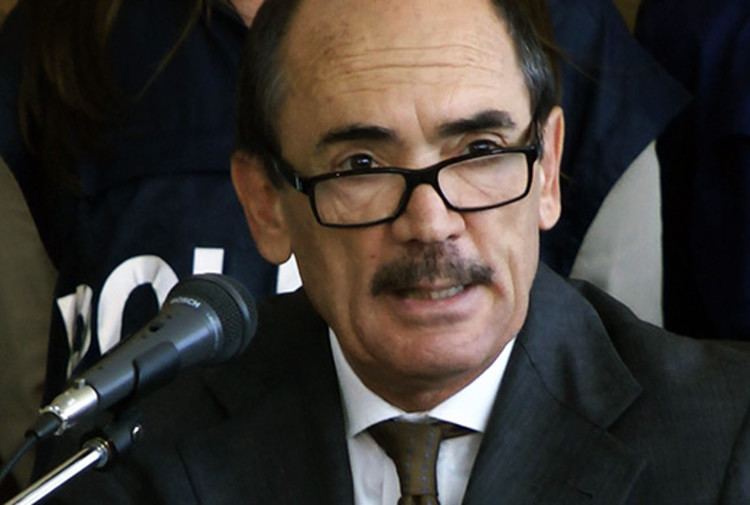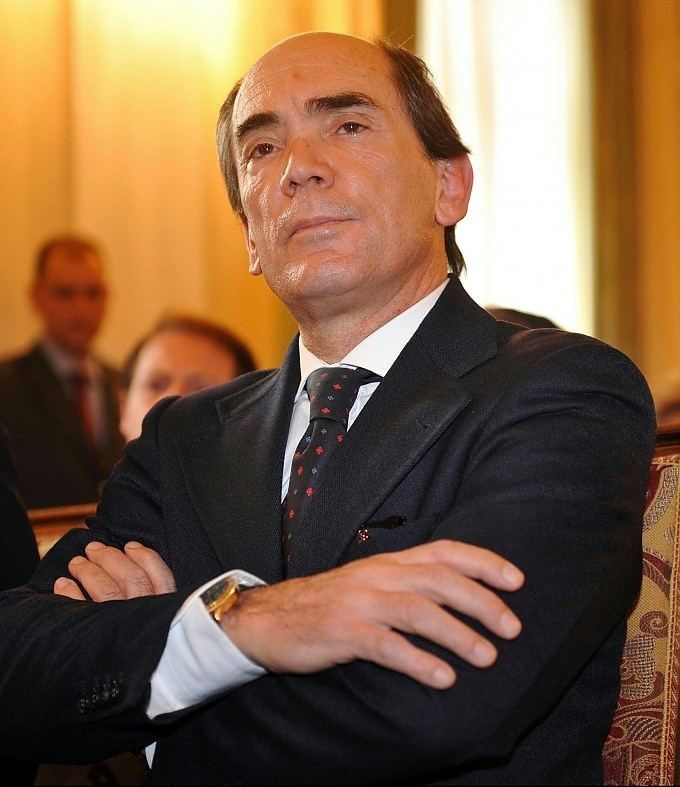Nationality Italian Doctoral students Carlo Sbordone | Died May 7, 1980 Name Federico Cafiero | |
 | ||
Born 24 May 1914Riposto ( 1914-05-24 ) Fields Measure and Integration theoryOrdinary differential equationsReal analysis Institutions Sapienza Universita di RomaIstituto Universitario NavaleUniversita degli Studi di Napoli Federico IIUniversita di CataniaUniversita di PisaScuola Normale Superiore Alma mater Universita degli Studi di Napoli Federico II Notable awards Tenore prize of the Accademia Pontaniana (1952)Golden medal "Benemeriti della Scuola, della Cultura, dell'Arte" (awarded by the President of the Italian Republic) (1976) Education | ||
Gli intoccabili intervista al procuratore federico cafiero de raho
Federico Cafiero (24 May 1914 – 7 May 1980) was an Italian mathematician known for his contributions in real analysis, measure and integration theory, and in the theory of ordinary differential equations. In particular, generalizing the Vitali convergence theorem, the Fichera convergence theorem and previous results of Vladimir Mikhailovich Dubrovskii, he proved a necessary and sufficient condition for the passage to the limit under the sign of integral: this result is, in some sense, definitive. In the field of ordinary differential equations, he studied existence and uniqueness problems under very general hypotheses for the left member of the given first order equation, developing an important approximation method and proving a fundamental uniqueness theorem.
Contents
- Gli intoccabili intervista al procuratore federico cafiero de raho
- Life and academic career
- The World War II years 19411943
- Rebuilding and researching the years from 1944 to 1953
- First in Catania and then in Pisa the years from 1954 to 1959
- Research activity
- Teaching activity
- Selected publications
- References

Life and academic career
Cafiero was born in Riposto, Province of Catania, on May 24, 1914. He obtained his Laurea in mathematics, cum laude, from the University of Naples Federico II in 1939. During the 1939–1940 academic year, he won an "Istituto Nazionale di Alta Matematica" scholarship and went in Rome to the institute: there he followed the courses held by Francesco Severi, Mauro Picone, Luigi Fantappiè, Giulio Krall and Leonida Tonelli.
The World War II years: 1941–1943
He was appointed instructor of the course of "Elementi di matematica" by the Faculty of Statistical Sciences of the University of Rome, for the 1940–1941 academic year: however, he was able to hold the course only for few months, since he was called to arms on January 1941 and stationed from May 1942 to September 1943 on the Northern African coasts as an officer of the San Marco Battalion. It was there that, after having successfully completed a dangerous sabotage operation, the Armistice between Italy and Allied armed forces surprised him and the other members of his unit, leaving them without any support. Nonetheless, in desperate conditions, he was able to lead his men to the Italian coasts with a rubber dinghy, and was awarded of a Silver Medal of Military Valor for this act.
Rebuilding and researching: the years from 1944 to 1953
Being discharged from Military Service on February 1944, he was not able to reach Rome and remained in Napoli. The institution which currently is the Institute of Mathematics of the University of Naples was on the way of reconstituting, the eight former mathematics institutes of the university having been literally "torn to pieces" by the Allied forces Military Police. It was necessary to collect and reorder in a new library all the volumes of the previously existed ones, then piled on the floor of a single room, catalogue them ex-novo and create new records, provide the library administration, and of course there was no administrative personnel available nor financial resources. It was also necessary to organize courses and exams for the numerous war veterans coming back from the front and for new students, with more than a half of the teaching personnel blocked beyond the Gothic Line: and in performing all those task Cafiero, jointly with few others and working as an adjuct professor of "Esercitazioni di Matematiche", was an outstanding collaborator of Renato Caccioppoli and Carlo Miranda.
Also in 1944 he married Jole Giorgini, his lifelong companion, and soon after they had a daughter, Anna.
Due to the scarce possibilities of being hired permanently by the Faculty of Sciences at that time, he accepted a position as adjunct assistant professor to the chair of Financial Mathematics, working with Luigi Lordi first at the Istituto Universitario Navale and then to the Faculty of Economics and Business, where he was appointed full assistant professor in June 1949. Nonetheless, his ties with the Faculty of Sciences remained strong, being employed there as adjunct professor of "Esercitazioni di Matematiche" several times, during those years: he was likewise assigned to several other courses related to Financial Mathematics by the Istituto Universitario Navale and by the Faculty of Business and Economics.
The scientific aspect of the collaboration with the Faculty of Sciences was nonetheless very intense, leading him to the "libera docenza" in March 1951, and to a full professorship chair in 1953: during this period, his scientific activity was done side by side at first with Carlo Miranda and later with Renato Caccioppoli, who found in him a dear pupil and friend.
Ranked first of the three winners of the competition for the chair of mathematical analysis of the University of Catania, on December 1953 he was appointed as extraordinary professor to that chair, and left Napoli for Catania.
First in Catania and then in Pisa: the years from 1954 to 1959
Cafiero started his service at the University of Catania on January 1954. His arrival at the university brought several innovations, both in teaching and in the research activity on mathematical analysis. In particular, he established a seminar on abstract measure theory open to assistant professors and to graduate students as well, and this was felt as true scientific revolution: he held the chair of mathematical analysis for three years. After becoming ordinary professor in 1956, he went to the University of Pisa on request by Sandro Faedo: during his stay, he held courses also at the Scuola Normale Superiore, becoming director of the "Leonida Tonelli" Institute and member of Board of directors of the Centro Studi Calcolatrici Elettroniche.
Research activity
Ma è subito dopo la seconda guerra mondiale che il processo di astrattizzazione della teoria della misura e dell'integrale si completa in modo definitivo. A ciò contribuirono Paul Halmos negli U.S.A. e Renato Caccioppoli, Federico Cafiero (1914–1980) ed altri in Italia.
Teaching activity
Come Andreotti anche Stampacchia non poté venire subito a Pisa e così io fui felice di avere con me un altro valoroso allievo di Renato Caccioppoli, Federico Cafiero, che restò a Pisa poco tempo, ma vi lasciò una forte traccia e formò il suo valido continuatore Giorgio Letta.
Selected publications
The papers of Federico Cafiero listed in this section are also included in his "Opere scelte" (Cafiero 1996), which collect all his published notes and one of his books.
